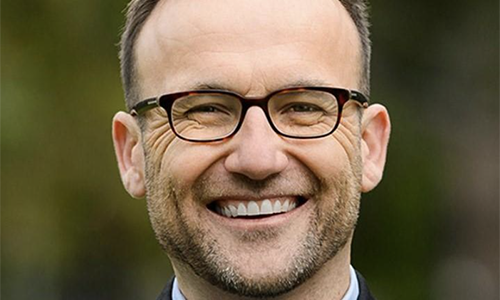It was supposed to be a triumph of modern engineering. The Olmsted Locks and Dam—situated on the Ohio River, an artery of American commerce—was designed to fix the aging infrastructure of Locks 52 and 53. These two rusting, Depression-era relics were falling apart, threatening to grind shipping traffic to a halt on one of the busiest waterways in the country. The Olmsted project would replace them with something better, bigger, and undeniably impressive.
How impressive? For starters, Olmsted is one of the largest and most complex inland water navigation projects in the world. Think of it as the Amazon Prime of river systems—efficient, high-tech, and responsible for keeping everything moving. The system of locks and dams on the Ohio River controls water levels for barge traffic, ensuring that goods—grain, coal, steel, and more—can move efficiently from the Midwest to the rest of the globe.
And move they did. Until the farmers got in the way.
Or rather, until the government got in their way. You see, when you’re holding back that much water, you better know where it’s going to end up. Spoiler alert—they didn’t. Instead, 70,000 acres of farmland—some of the most productive in the country—disappeared under water. Livelihoods were destroyed, 454 farmers lost their land, and the folks who feed you were left holding the bag for one of the most expensive infrastructure projects in U.S. history.
An example of just one of the farmers completely ruined, some farmers lost thousands of acres of crop.
The farmers didn’t ask for this. They didn’t sign up for their fields to become an unintentional reservoir for one of the world’s largest locks and lakes. Yet here they are, mired in bureaucratic limbo, waiting for justice from a government that would rather stonewall than admit, “Oops, we broke your life.”
Why? Because the numbers are big. Really big. If the government acknowledges its colossal mistake, it’ll cost them more than just money—it’ll cost them credibility. And let’s be real: credibility is the one thing Washington pretends to still have. So instead of stepping up, they punted the problem to the Department of Justice. You know, the same DOJ that’s great at prosecuting random nobodies but apparently breaks into a sweat when it comes to helping the actual victims of government incompetence.
Here’s the thing: government isn’t inherently evil. Most of the time, it’s just wrong—wrong in its priorities, wrong in its assumptions, wrong in its execution. But when it refuses to fix what it’s broken? That’s when wrong turns into evil. That’s what these farmers are up against: a system that knows it’s failed but doesn’t have the guts to make it right.
Speaking of guts, where are the voices standing up for these farmers? This is the region J.D. Vance wrote about in Hillbilly Elegy. The Ohio Valley, stretching from Ohio into Kentucky, is the very heartland he claimed to champion. These are his people—the folks who feel the brunt of government neglect. They’re the backbone of this country, and their suffering is the story he used to launch his political career.
And now he’s in the position to finally help these farmers that have been forgotten for years.
And let’s not forget Vice President Kamala Harris, who likes to point out her own roots in this region. She grew up in Ohio, and her family has connections to Kentucky. The plight of these farmers is a direct link to the very places our leaders hail from. Yet the silence on their behalf is deafening.
Speaking of fiscal responsibility, have you checked the national debt lately? We’re $30 trillion in the hole, and adding another trillion every couple of weeks, give or take. And yet, somehow, we always find money to send abroad. Billions to Ukraine, where farmers are understandably fighting to rebuild their lives and fields. That’s fine—great, even. But what about the people here? The ones who feed our country? What is the premise of “America First” if the farmers who feed Europe flourish, while the ones who feed America drown? Literally.
The Olmsted project is an awesome display of what America can do when it sets its mind to something massive. We’re talking about a feat of engineering so advanced it’s like the Apple iPhone of locks and dams. But the same ingenuity that built the thing disappears the second there’s a human cost. And make no mistake: there is a human cost.
Farm country completely flooded.
America loves its farmers in speeches. Politicians love to pose in front of tractors and slap farmers on the back at county fairs. But when the floodwaters rise—literally—they’re left to fend for themselves. The government could fix this. It could settle, compensate these people, and move on. But instead, it’s choosing to fight, because it’s easier to bury a few farmers in legal red tape than to admit, “Yeah, we wrecked your life.”
This isn’t just a Midwest problem. This is a national disgrace. These farmers didn’t just lose their land—they lost their futures. They’re the reason you have food on your table. And yet, instead of helping them, the government has left them in the lurch.
If you want to know where America’s priorities lie, just follow the money. We’re sending billions overseas while ignoring the people who are literally keeping us fed. A bailout for Wall Street, silence for the people who grow your wheat. This isn’t about being anti-aid or anti-government—it’s about being pro-accountability. If we can find the funds to rebuild other nations, surely we can scrape together the decency to help the people who feed our own.
The Olmsted Dam is a marvel of human achievement, but the story of the farmers it ruined is a marvel of human failure. And until the government steps up to make it right, every time you bite into a slice of bread or a burger bun, remember this: someone paid a hell of a price for it, and it wasn’t the DOJ.
The post When the Government Flooded America’s Breadbasket and Walked Away appeared first on The Gateway Pundit.









